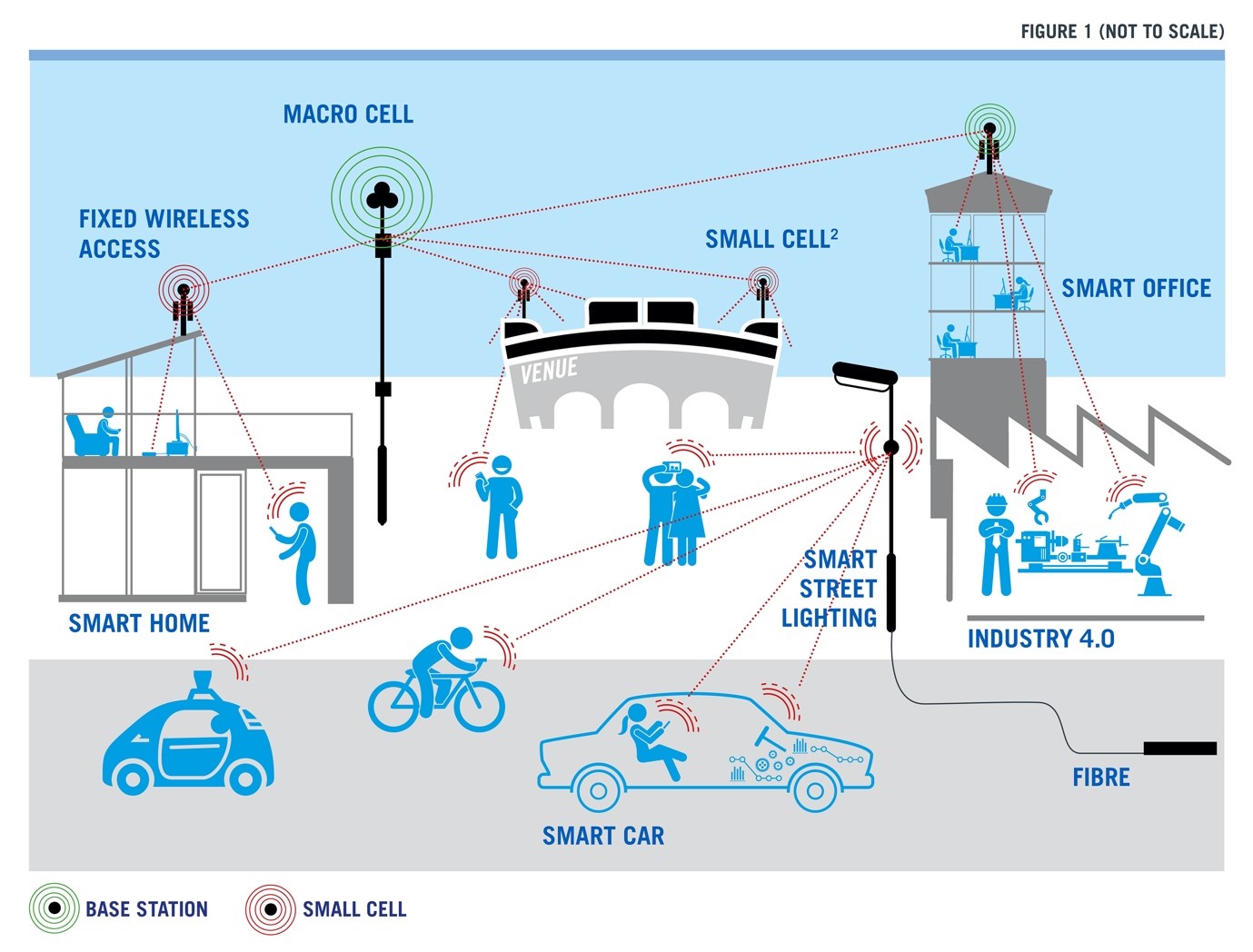Will 5G affect our environment and landscape?
As a result of this shorter range, the rollout of 5G will create a need for more physical infrastructure. This means more fibre-optic cable in the ground, or ‘backhaul’, which will not be noticed by the public, and a higher density of small cells and more 4G masts to create the base layer of wireless infrastructure that 5G networks will need in order to function across Scotland.
The network will comprise a ‘top layer’ of larger cell sites known as macros. Existing 4G sites will be repurposed and upgraded to deliver 5G services. It is unlikely that large numbers of new urban macro sites will be needed, although their height may need to be increased to get over ‘clutter’ such as buildings, trees, and high land.
In rural areas, there will be more deployment of backhaul through the Scottish Government R100 project along with more 4G masts under the Scottish Government S4GI project and the new joint government and industry initiative, Shared Rural Network.
Existing and new infrastructure
4G masts that are currently deployed will be capable of being augmented as 5G rolls out. This will create a macro layer that will vastly improve connectivity across Scotland, particularly in areas with no existing coverage.
The new element for 5G infrastructure will be small cells located at close intervals in large numbers. This ‘densification layer’ will complete the network architecture, operating below the macro site ‘top layer’. Small cells will bring depth, power and capacity of 5G networks. They are low-power cell site nodes using small, discreet antennas serving fewer users at high access speeds over a smaller geographic area.
Small cells can be mounted on existing buildings and street furniture such as bus stops, lampposts and billboards. Virtually invisible to the untrained eye, they blend seamlessly into the urban landscape.
Towards net zero
Enhanced connectivity can support Scotland’s objective to build a net-zero carbon nation. Innovations in efficient energy use will mean lower emissions. More efficient and automated processes in manufacturing will reduce energy uses and resources, while smarter energy grids will be to integrate renewables and allow new greener technologies such as electric vehicles.

To find out more about how the Scotland 5G Centre is supporting the rollout of 5G in urban and rural areas, read about our 5G projects.
Article published June 2020
